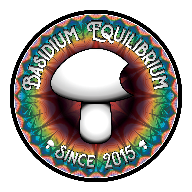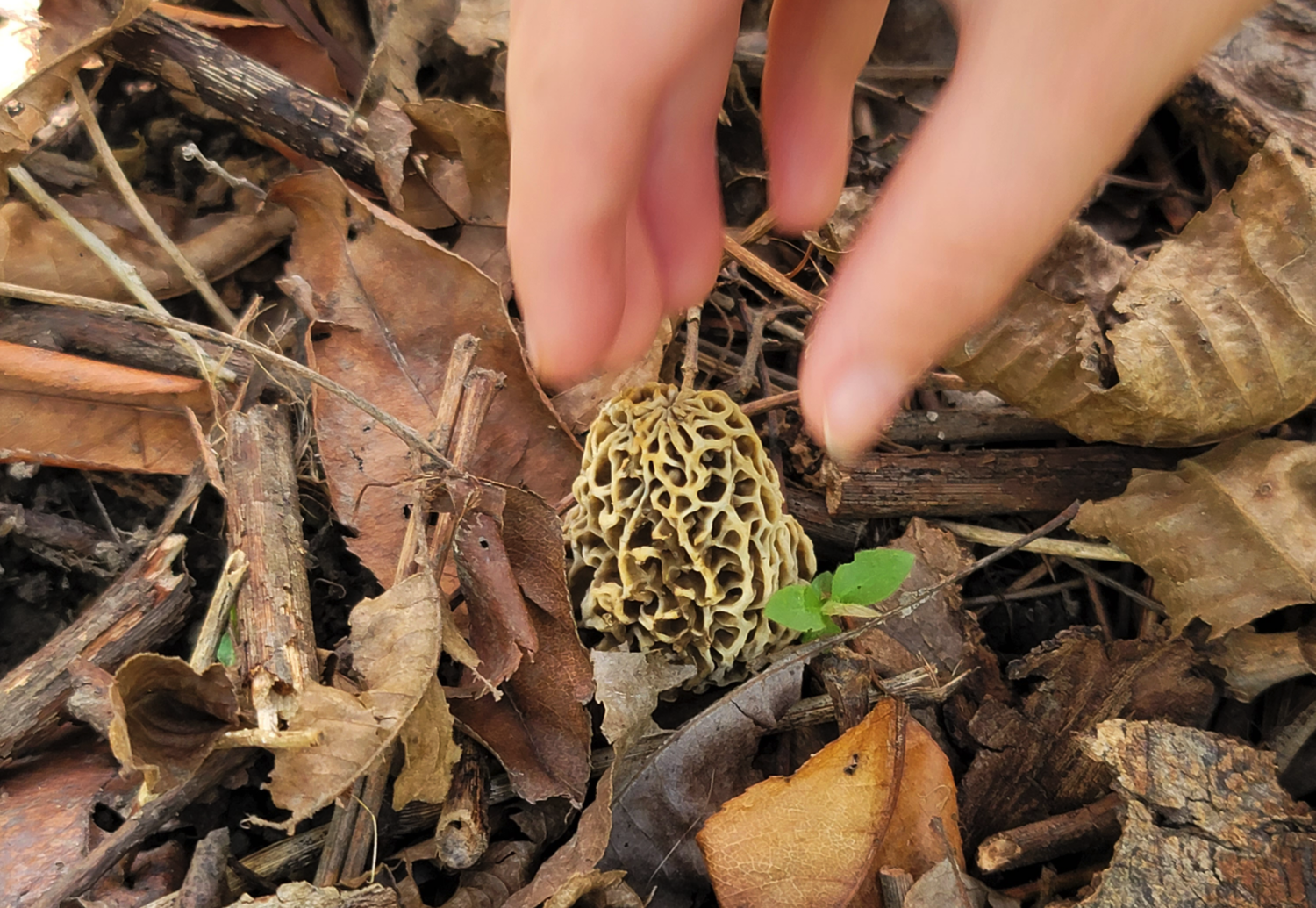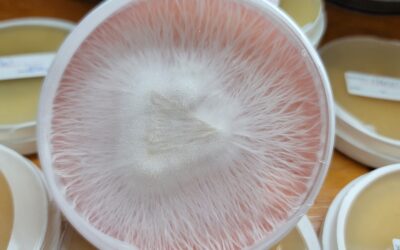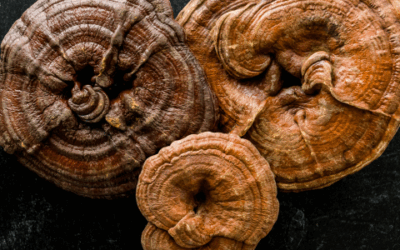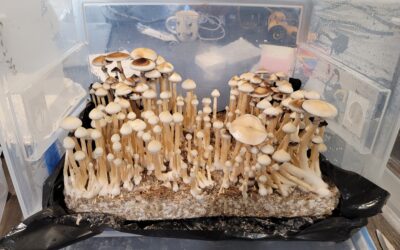6 Essential Mushroom Foraging Tips for Beginners
When I first began foraging for mushrooms, it became an exciting way to connect with my local environment in a completely new and immersive way. The inspiration came from discovering morels, and soon I found myself constantly seeking information to better understand my finds. From encountering peculiar jelly-like mushrooms clinging to dead branches to spotting conch-shaped fungi growing on trees during the winter, each discovery fueled my curiosity.
Every mushroom has its own season and ideal conditions for growth. Yet, they all share a few fundamental requirements to thrive. Once you learn to recognize these basic needs—such as the right habitat, substrate, and environmental factors—it becomes much easier to consistently locate mushrooms while foraging. This newfound knowledge transforms the hunt into a rewarding and ongoing adventure.
Beginner Mushroom Foraging Tips
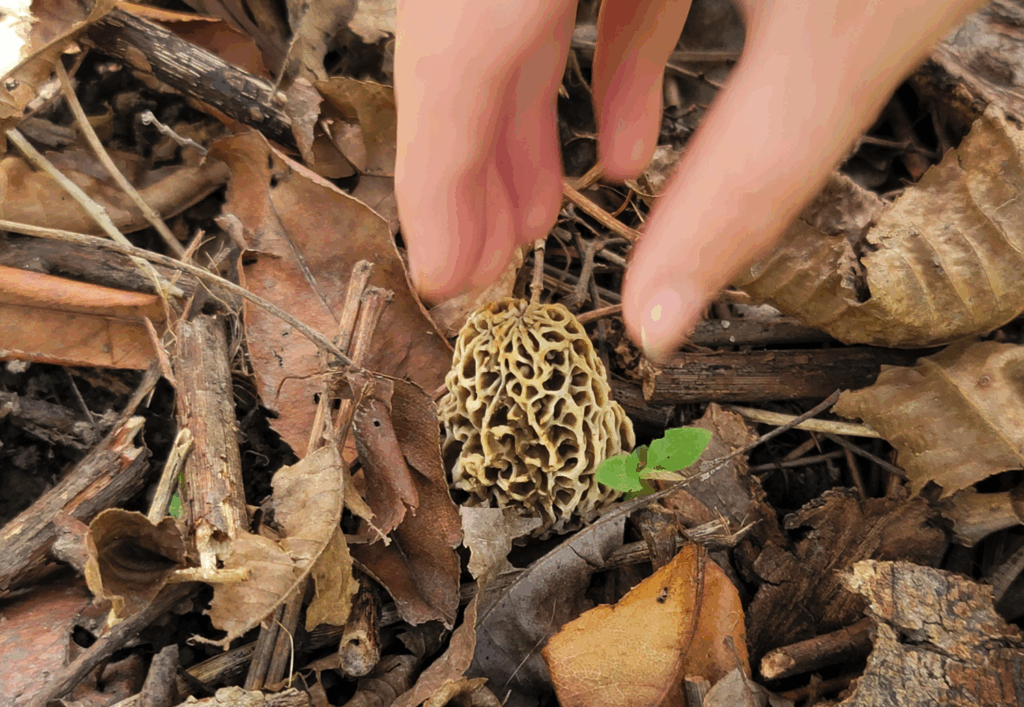
Morels (Morchella spp.)
Seasonality: Spring
Description: Distinctive honeycomb-like caps; prized for their earthy flavor.
Habitat: Found in spring, often near dying trees or areas affected by forest fires.
Common States:
- Midwest: Wisconsin, Illinois, Missouri, Oklahoma
- Northeast: Pennsylvania, New York, Vermont
- West: Oregon, Washington, Montana
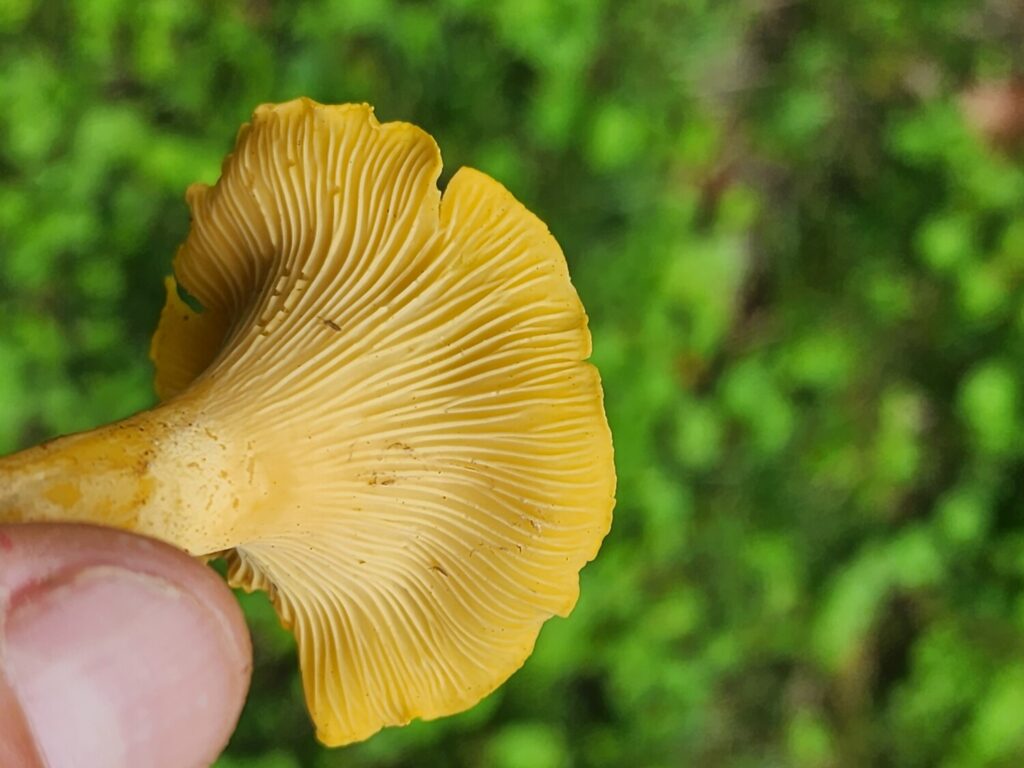
Chanterelles (Cantharellus spp.)
Seasonality: Summer and Fall
Description: Bright yellow to orange, trumpet-shaped mushrooms with false gills.
Habitat: Found in hardwood forests during warm and damp conditions.
Common States:
- Pacific Northwest: Oregon, Washington, California
- Midwest: Wisconsin, Illinois, Missouri
- Southeast: Georgia, North Carolina, Alabama
- Northeast: Maine, Vermont, New Hampshire
Black Trumpets (Craterellus cornucopioides)
Seasonality: Summer and Fall
Description: Dark, hollow, trumpet-shaped mushrooms with a rich, smoky flavor.
Habitat: Found in mossy hardwood forests.
Common States:
- Northeast: Massachusetts, New York, Pennsylvania
- Mid-Atlantic: Virginia, Maryland
- Midwest: Wisconsin, Illinois, Missouri
- West: California, Oregon
Hen of the Woods (Grifola frondosa)
Seasonality: Fall
Description: Large, clustered mushrooms with a feathered appearance; meaty texture.
Habitat: Found at the base of oak trees.
Common States:
- Northeast: New York, Pennsylvania, Connecticut
- Midwest: Ohio, Wisconsin, Illinois, Missouri
- Southeast: North Carolina, Tennessee, Kentucky
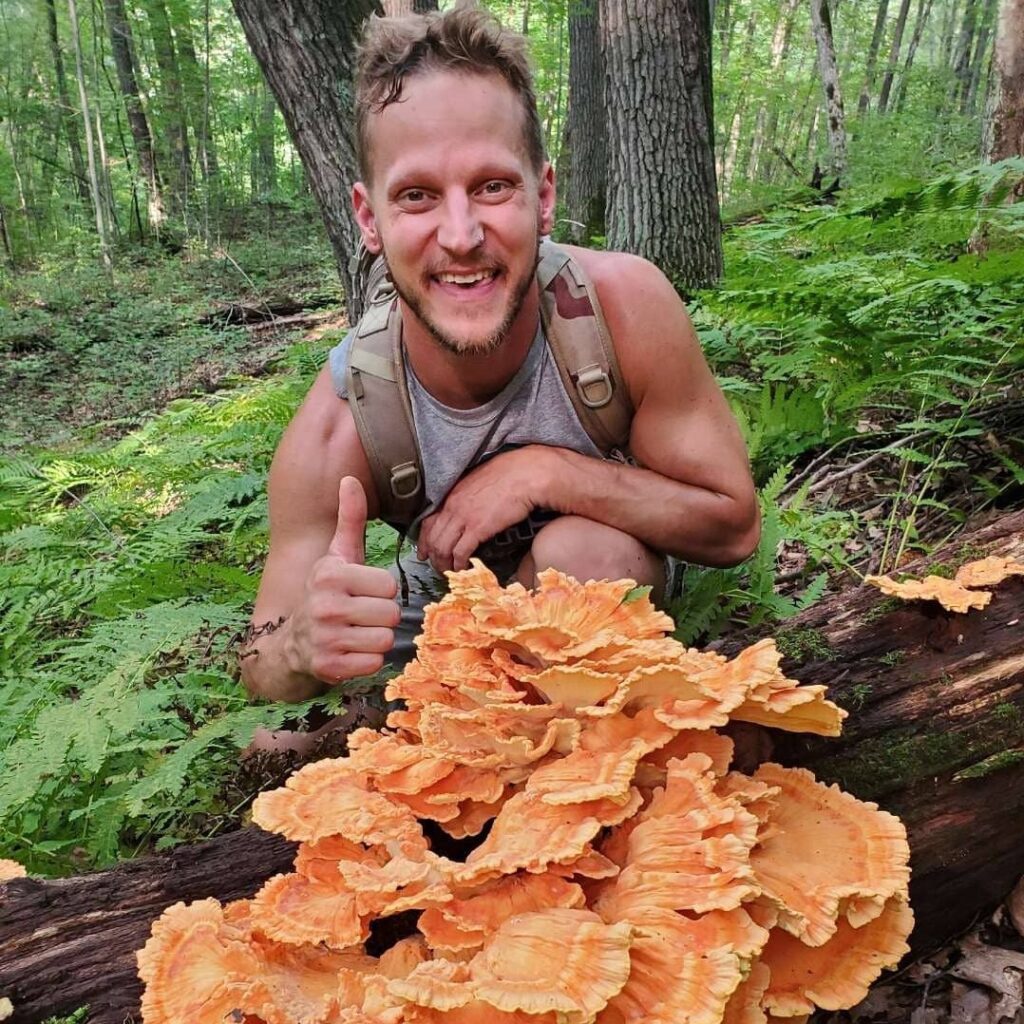
Chicken of the Woods (Laetiporus spp.)
Seasonality: Summer and Fall
Description: Vibrant orange and yellow shelf fungi with a chicken-like texture.
Habitat: Found on hardwoods like oak.
Common States:
- Southeast: Georgia, Florida, Alabama
- Midwest: Ohio, Michigan, Indiana, Missouri
- Pacific Northwest: Oregon, Washington
Porcini (Boletus edulis)
Seasonality: Fall
Description: Thick, bulbous stem with a brown cap and also spongy pores; rich umami flavor.
Habitat: Found under pine and oak trees.
Common States:
- West: California, Colorado, Washington
- Northeast: Maine, Vermont, New York
- Rocky Mountains: Montana, Idaho, Wyoming
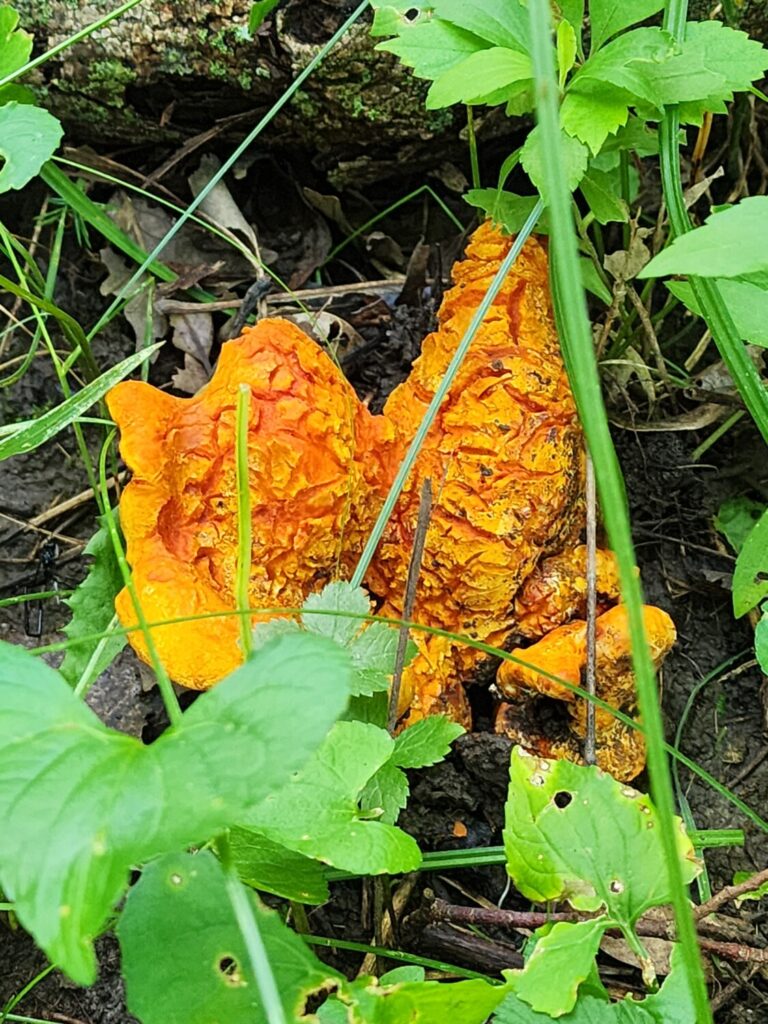
Lobster Mushrooms (Hypomyces lactifluorum)
Seasonality: Summer and Fall
Description: Bright orange fungus that parasitizes other mushrooms, turning them edible with a seafood-like flavor.
Habitat: Found in hardwood forests.
Common States:
- Northeast: New York, Maine, Vermont
- Midwest: Wisconsin, Illinois, Missouri
- Pacific Northwest: Oregon, Washington
- Southeast: North Carolina, Georgia
6 Essential Mushroom Foraging Tips for Beginners
1. Follow the Rain: Environmental Factors
Rainfall serves as the lifeblood for mushroom growth, creating the damp conditions fungi need to fruit. After a significant rain, mushrooms often appear within a day or two, thriving in shaded, humid areas such as beneath dead trees, under leaf litter, or along creeks. The moisture provided by rain is so vital that during drought conditions, mushroom foraging can become nearly impossible, as the lack of rain greatly limits fungal activity.
Understanding this relationship with rain can help foragers time their outings for the most fruitful results. Occasionally I find some Fungi outside this rule, but it isn’t usually very fruitful.
Just a few Species to Look For:
- Oyster Mushrooms (Pleurotus ostreatus): Found on decaying hardwood after rain; prefers cool, wet conditions. Oyster mushrooms are more common in the fall and winter in the Mid-west United States.
- Shaggy Mane (Coprinus comatus): Often pops up in grassy fields and also roadside ditches after a good rain. More common during late summer months.
Pro Tip: Overcast days following rainfall are perfect for spotting mushrooms. Diffused light enhances their visibility against the forest floor.
2. Learn the Seasons: Seasonality Matters
Mushrooms are highly seasonal, with different species appearing at specific times of the year. Knowing what grows when is crucial to foraging success. I have kept a journal for Foraging to remind myself of my specific location of “Honey Holes” and when I can find my favorite mushrooms.
Seasonal Favorites:
- Spring:
- Morels (Morchella spp.): Found in late spring near elms, ash, or recently burned areas.
- Dryad’s Saddle or Pheasant’s Back mushroom (Polyporus squamosus): Grows on decaying wood, especially in cool, moist spring conditions. Generally a rule of thumb is, if I find Pheasants Back I find Morels near by. This is between late April through the end of May.
- Summer:
- Chanterelles (Cantharellus spp.): Abundant in midsummer; found in mixed hardwood forests.
- Black Trumpets (Craterellus cornucopioides): Often near mossy streams or under oaks.
- Fall:
- Lobster Mushrooms (Hypomyces lactifluorum): A parasitic fungus transforming other mushrooms; vibrant orange and meaty. I find these in early fall.
- Lion’s Mane (Hericium erinaceus): Grows on dead or decaying hardwood during fall.
- Winter:
- Velvet Foot (Flammulina velutipes): Found on decayed hardwoods even in cold temperatures.
- Oyster Mushrooms: Continue to fruit during mild winter conditions.
3. Understand Substrates: The Growth Medium
Each mushroom has a specific substrate where it thrives. Observing these growth habits can make identification easier. Specifically for foraging, over time learning how to identify tree by species can be a massive aid. I found myself learning so much about tree identification.
Examples by Substrate:
- Decaying Wood:
- Turkey Tail (Trametes versicolor): Grows on logs and stumps, recognizable by its colorful concentric rings.
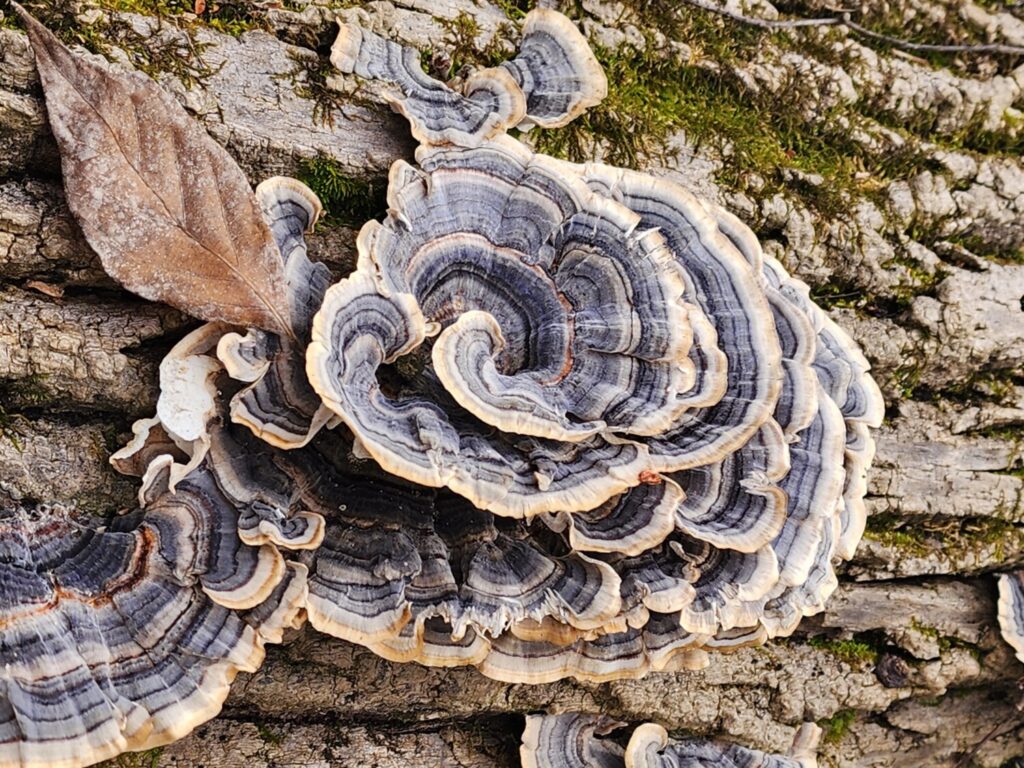
-
-
- Lion’s Mane: Prefers dead or dying hardwood trees, forming cascading, tooth-like spines.
-
- Living Trees:
- Chicken of the Woods (Laetiporus spp.): Found on oaks or conifers; bright orange clusters indicate its presence.
- Grasslands:
- Field Mushrooms (Agaricus campestris): Found in open pastures; white caps with pinkish gills when young.
- Manure or Pastures:
- Psilocybe cubensis: Thrives in nutrient-rich manure, typically found in warm, humid regions.
4. Use Color as a Clue
Color is an essential identification tool, helping to distinguish edible mushrooms from their toxic lookalikes. For example: False Morels are typically red in color while real Morels are usually Blonde, Brown, and Grey.
Species with Distinct Colors:
- Golden Chanterelles: Bright yellow or orange, with a wavy cap and false gills.
- Lobster Mushrooms: Vibrant orange-red exterior.
- Fly Agaric (Amanita muscaria): Iconic red cap with white spots (toxic, not edible).
- Hen of the Woods (Grifola frondosa): Gray-brown clusters resembling a fluffed-out hen.
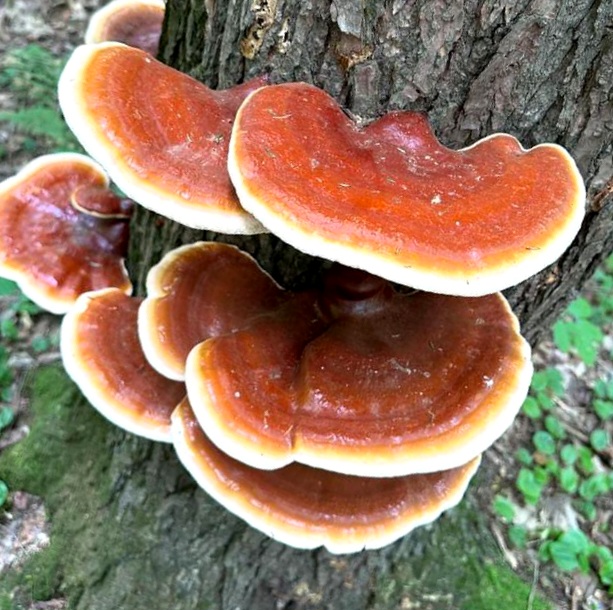
Ganoderma
5. Beware of Hiding Experts
Some mushrooms, like morels, are notoriously difficult to spot. Their camouflaged appearance requires attention to detail and an understanding of their preferred habitats. I have found that the commonly referred to as “The Greys”, appear more in the beginning of spring. They are absolutely harder to find and also a bit smaller. Morels usually grow symbiotically to trees additionally are often under leaf litter. Making the morel a true expert in hiding.
Spotting Morels:
- Look near recently dead elms, ash, and also sycamores in late spring.
- South-facing slopes and areas affected by recent wildfires are prime hunting grounds.
Pro Tip: Train your eyes to identify the honeycomb-like structure of morel caps, which blend seamlessly with the leaf litter.
6. Confirm Your Finds
Always confirm your finds using reliable resources. Consuming the wrong mushroom can lead to severe consequences.
Tools for Confirmation:
- Apps: Use iNaturalist to upload photos and receive community feedback.
- Field Guides: Carry a regional mushroom guide to cross-reference key features.
- Mushroom Identification Groups: Join Facebook communities or local mycological societies for expert advice.
Important Reminder: When in doubt, don’t consume! Leave uncertain finds in place and continue to learn. Additionally almost all mushrooms require to be cooked through well.
Bonus Tips for Beginners
- Start Small: Focus on learning a few easily recognizable mushrooms, such as Chanterelles, Lions Mane or Oysters.
- Log Your Finds: Keep a journal or app record of where and when you find mushrooms to build your foraging knowledge.
- Respect Nature: Practice sustainable foraging by leaving some mushrooms behind to ensure continued growth and reproduction.
Mushroom foraging is a rewarding adventure filled with opportunities to learn and also connect with the natural world. With these beginner tips and species-specific insights, you’re well on your way to becoming a confident forager. Stay curious, stay safe, and most importantly—enjoy the hunt! And thanks for reading Our 6 Essential Mushroom Foraging Tips for Beginners.
